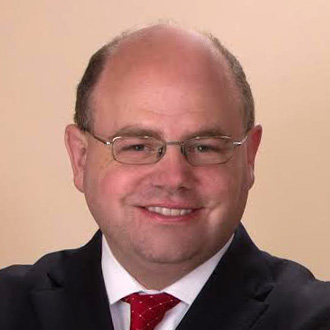Big business has captured the regulators, which has transformed the federal government into an accomplice to cronyism. Can the regulatory apparatus be repaired—or is it corrupt at its foundations?
The authors of a recent article in the Wall Street Journal argue for reform, showcasing the strengths and weaknesses of “pro-capitalist commentary” in today’s mainstream media. The authors correctly use free-market logic to expose a problem with government intervention as it is currently practiced, but then inexplicably offer a “solution” that would be susceptible to similar problems.
Specifically, the WSJ focuses on “regulatory capture” by big business but ignores one obvious solution: eliminating the federal government’s role altogether and relying instead on decentralized market mechanisms to protect the public.
The article is promising as it begins:
The financial scandal du jour involves leaked audio recordings that purport to show that regulators at the Federal Reserve Bank of New York were soft on Goldman Sachs. Say it ain’t so.
The news is being treated as shocking by journalists who claim to be hard-headed students of financial markets.... The real scandal here is the excessive faith that liberal journalists and politicians continue to put in financial regulation. The media pack is discovering regulatory capture—a mere 43 years after George Stigler published his landmark paper on the concept.
Exactly right. The same crowd that decries the huge role of “money in politics” and fears that big business will take over the world then suggests giving the federal government more power... as if Leviathan will be constrained not by the billionaire bankers and arms manufacturers but instead by voters punching chads every four years. The idea goes that regulatory power trickles up to bureaucrats with good intentions and an unbiased understanding of the common good.
It’s worth dwelling on this crucial point. The whole schtick of the regulatory State is that we can trust a group of technocrats in Washington, DC, to guard the interests of the people by standing up to the greedy and soulless business tycoons who—left to their own devices—would lie, cheat, and kill in order to turn a profit. Yet, anyone with an open mind can see that this approach has, time and again, utterly failed in practice.
For example, Harry Markopolos had been writing the SEC since 1999 warning that Bernie Madoff was running a Ponzi scheme, yet the SEC (which had ties to Madoff and his family) ignored the obvious red flags. In the end, Madoff’s kids turned him in.
Or how about another classic example, where the federal government stands valiantly in the breach to protect Americans from the big, bad oil companies? The Minerals Management Service (MMS) was the previous name of a group inside the Interior Department. In a major scandal that caused it to change its name, MMS employees in Colorado were caught accepting drugs and sex from the companies they were supposed to be regulating, while MMS employees in Alaska got in trouble for throwing a party with a cake that said “Drill, Baby, Drill” on the frosting. The MMS also played a dubious role in the events leading up to the disastrous BP oil spill in the Gulf of Mexico, where the agency clearly went along with the giant oil company rather than acting as a disinterested referee.
Returning to the original WSJ article, after so admirably marching down the field (by quoting Stigler and castigating naïve progressives), it then fumbles the ball just before the end zone. The WSJ argues that the “logical policy response” to the inevitable regulatory capture is “to enact simple laws that can’t be gamed by the biggest firms and their captive bureaucrats.” It recommends ditching the Dodd-Frank nightmare and other rules, but putting in their place “a simple requirement for more bank capital—an equity-to-asset ratio of perhaps 15%.” The WSJ also endorses “economist Charles Calomiris’s plan to automatically convert a portion of a bank’s debt into equity if the bank’s market value falls below a healthy level.”
In light of these suggestions, one wonders if the WSJ team really understands how pervasive the problem of regulatory capture is. Look, it’s not as if Madoff found a loophole that said, “It’s illegal to run a $50 billion Ponzi scheme unless you register it in Vermont on the last day of February in a leap year.” No, Madoff was clearly breaking existing laws on the books, and the SEC simply looked the other way.
Regarding the specific rules that the WSJ recommends—thinking that they will be resistant to regulatory capture—there are obvious dangers of abuse. For example, what type of assets can a bank use to qualify for its “equity-to-asset” ratio, and if they are risky bonds, are they marked-to-market (and how often, if so)? If a politically connected institution hits only a 14 percent equity-to-asset ratio, why would the feds suddenly crack down on it when they ignore the existing rules? Regarding the Calomiris plan, surely the designation that a particular bank’s market value has fallen below a “healthy level” is open to abuse. Recall that Henry Paulson in a weekend meeting allegedly got the big banks to accept TARP funds by saying that their chief regulator, Ben Bernanke, would declare them capital deficient on Monday morning if they refused.
The problem with State regulation is that there is no competition or choice for the final “customer.” In a genuinely free market, private organizations would provide many of the oversight and “regulatory” functions that people wrongly assume only the federal government can offer. For example, ratings agencies would warn consumers of risky financial practices, and if those agencies themselves were asleep at the wheel, then they would go out of business after a disaster. In contrast, today’s major ratings agencies are propped up by government regulations that require approval from a short list (Moody’s, S&P, Fitch, etc.) for a financial institution to hold “safe” assets to satisfy certain regulations.
In my own work, I have stressed the expanded role that insurance companies would play in a truly voluntary society. For example, if an oil company wanted to drill offshore, the relevant property owners would probably require contractual guarantees of indemnification in the event of a spill. (This does not happen in today’s world, where the US, state, and local governments control much of the land involved.) Then, major insurance companies would underwrite the process. They would send their inspectors for random spot checks and so forth before issuing a policy that could end up costing them billions.
No system is perfect. But it’s time everyone looked more carefully at regulatory bodies themselves—not as a remedy for corruption, but as perhaps its very source.
Re-printed with permission. © Copyright 2014, Foundation for Economic Education









